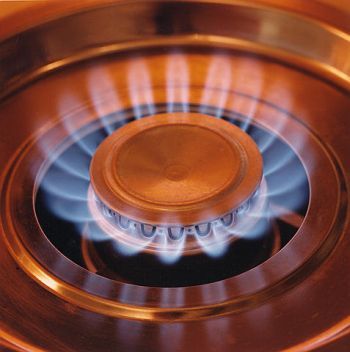Natural gas to come under focus Report by PINC Research
 Natural gas to come under focus – Set to play a pre-eminent role in India’s Energy Mix.
Natural gas to come under focus – Set to play a pre-eminent role in India’s Energy Mix.
In 1999, natural gas represented almost 4% of India’s total primary energy. Over the last decade, natural gas share in energy mix has increased to 10%. Demand for gas has been constrained not only by non-availability, but also inadequate infrastructure development. Infrastructure growth in India has been restricted due to lack of regulatory push. However, going forward, with the advent of indigenous sources, infrastructure development is increasingly gaining traction and energy security is the top priority for GoI. Through Hydrocarbon vision 2025, the GoI calls for increased focus on the share of natural gas in India’s primary Energy mix.
Share of natural gas in India’s energy mix is expected to rise to 11% in 2012 and to 20% in 2025 from 10% in 2009. Going forward, gas gains at the expense of oil as oil continues to suffer a long run decline in market share.
Carbon emissions vary by energy source, with coal being the most carbon-intensive fuel, followed by oil and natural gas. As changes in the fuel mix alter the share of total energy demand, overall carbon intensity changes. Increased focus on natural gas is also in line with government's intent to voluntarily reduce CO2 emission by 25% from 2005 levels by 2020.
UNFOLDING THE INDIAN GAS STORY
In future, we expect natural gas sector to experience a major turnaround with the advent of gas availability from various indigenous sources– the missing link so far. We already know that India’s energy requirement is unmet and there remains huge demand potential in power, fertilizer and CGD. Increasing supply will further enhance demand in other industries. The next obvious step in sector’s evolution is development of downstream infrastructure which has gained momentum in couple of years as transmission companies are planning to agressively expand their pipeline network. Setting up LNG terminals will accelerate the growth momentum. Lastly, regulatory clarity along with uniformity in pricing will provide the much needed comfort.
DEMAND-SUPPLY MISMATCH
Ample demand
Natural gas can be used for almost all purposes– industry/power/transport. Natural gas is emerging as the preferred fuel of the future in view of it being an environmental friendly and economically attractive fuel. Given that the share of gas in the energy basket is rising and percapita consumption is among the lowest, the latent potential demand for gas remains large. Segment wise estimation of demand for natural gas
For the short term, several forecasts from independent research groups are available and estimates range from 255mmscmd to 381mmscmd by 2015 (Crisil and Mercados – Refer figure below).
Estimates from 11th Five-Year Plan reports gas demand at 179mmscmd in 2008 and expects it to grow at CAGR of 12% to 280mmscmd by 2012 whereas forecasts from oil ministry have projected gas demand of 316mmscmd from fertilizer and power sector alone in 2014.
Power, Fertiliser and CGD to drive demand growth
Demand from Power Sector: Power and fertiliser together accounts for 70% of total demand. We expect gas based power capacity of 8,766MW over next five years. That would call for an additional gas requirement of 34mmscmd by 2015 (CAGR of 9%) to fulfill the incremental capacity. Also, it has been well established that natural gas is the most cost effective fuel vis-avis other liquid fuels.
Demand from Fertiliser sector: Major demand is expected to come from re-opening of existing plants and converting the feed stock from Fuel Oil, Naphtha to Natural Gas. Govt. focusing on achieving selfsufficiency in Urea production, should modify the current investment policy and allocate natural gas for the expansion. We expect capacity switch/ revival of 8-10mmtpa of Urea in the next 5-7 years.
Demand from CGD sector: Of the total CGD demand, demand from industrial and commercial units is high, followed by CNG and household demand.
CGD Pricing (Natural gas vis-à-vis other fuels) Given demonstrated pricing power of the CGD and the alternate fuels it replaces (auto fuels, LPG) we expect a large part of the incremental demand to be serviced by natural gas.